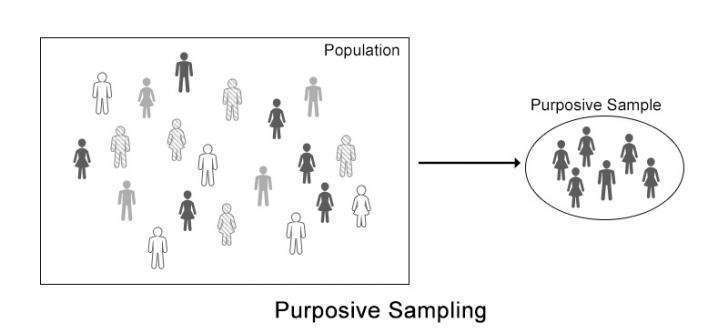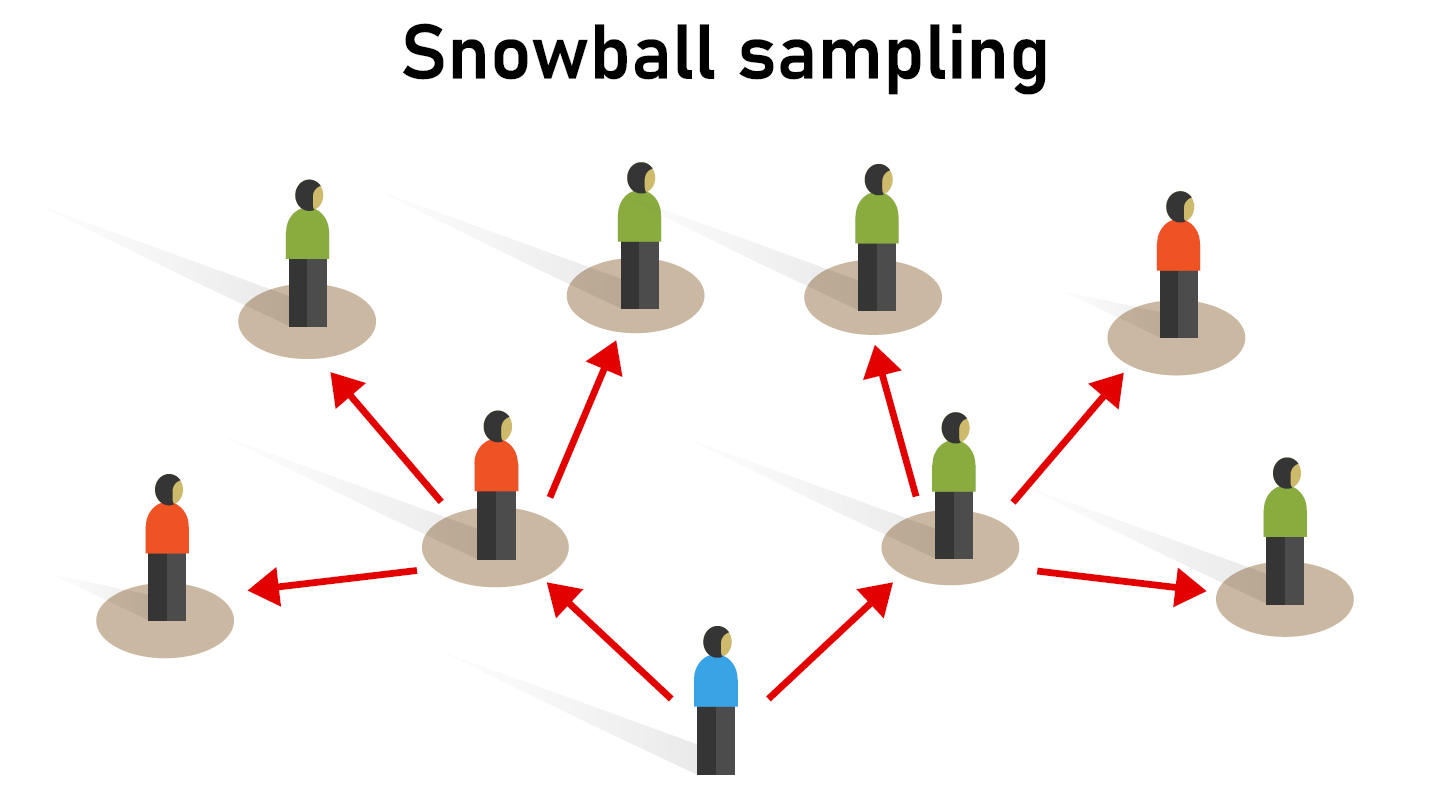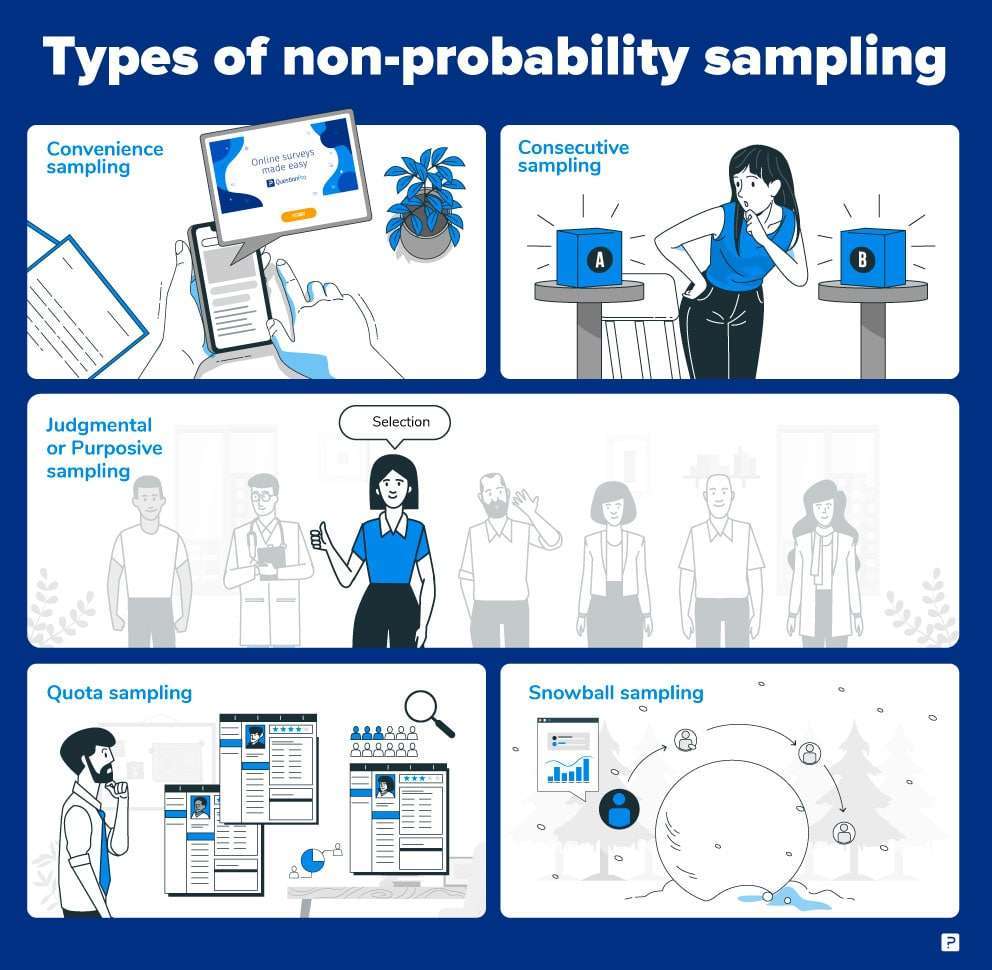Non-probability sampling is a sampling strategy in which it is impossible to compute the probability of any individual being chosen for a sample. It’s the polar opposite of probability sampling, in which the probability may be calculated. Furthermore, probability sampling requires random selection, but non-probability sampling does not, relying instead on the researcher’s subjective judgement.
For a procedure to be deemed probability sampling, the probabilities do not have to be equal. For example, one person may have a 10% probability of getting chosen, while another may have a 50% chance of being chosen. When you can’t calculate the odds at all, it’s non-probability sampling.

The aim of non-probability sampling techniques is not to test hypotheses. Instead, they develop an initial understanding of a minor or under-researched population. This sampling method is most useful for exploratory studies such as pilot surveys, etc. This method is best opted by the researchers in studies where it is impossible for random possibility sampling due to the time or cost consideration.
Types of Non Probability Sampling Method

There are four types of non-probability sampling:
1. Convenience Sampling
As the name suggests, the convenience sampling method is one of the non-probability sampling techniques where samples are selected from the population convenient to the researchers. The pieces are collected from places such as malls, schools, etc.

Researchers opt for a convenience sampling method because the expert, homogeneous method is the most common non-probability sampling method due to its speed, cost-effectiveness, and easy sample availability.
The 2 subtypes of convenience sampling are consecutive sampling and volunteer sampling.
1a. Consecutive sampling
With some slight variations, the consecutive sampling method is similar to that of the convenience sampling method. In this method of sampling, researchers pick a single person or a group of samples and conduct research over a period of time. The researcher analyzes the results and then moves on to another subject or a group if needed. This type of sampling allows researchers to work with various topics and fine-tune with his/her research.
1b. Volunteer sampling
In this sampling type, individuals voluntarily participate in the sampling process. They sign up themselves until the sample reaches its desired size. It requires less work in contacting people.
2. Judgemental or purposive sampling
Selection of samples which is based primarily on the researcher’s knowledge and credibility is called judgemental or purposive sampling. Researchers only select people who fit into the criteria of the study. This type of sampling can’t be considered a scientific method of sampling.

The disadvantage of this type of sampling is that the preconceived notion of researchers will influence the results. This method of sampling involves a high amount of ambiguity. The subtypes of purposive sampling are deviant sampling, expert sampling, homogeneous sampling, and heterogeneous sampling.
2a. Deviant sampling
Here the samples are selected based on the unusual characteristics of the participant such as outstanding success or notable failures. This style of samples receives unique and unpredictable responses.
2b. Expert sampling
The samples of expert sampling are chosen based on the knowledge of the sample participants in a given area. This type of sampling is used in highly technical research projects.
2c. Heterogeneous sampling
This type of sampling helps researchers to represent a wide range of views and opinions on a particular topic of the research. This type of sampling helps researchers to look at a topic from every perspective. It also makes the results look very effective.
2d. Homogenous sampling
This type of sampling is beneficial if the researcher is looking to get samples from people with identical traits and beliefs.
3. Snowball Sampling
When samples are difficult to locate for the researchers, snowball sampling techniques come to the rescue. Snowball sampling helps in finding samples for the researchers.

When the sample size is small and when it is not easily available researchers use this type of sampling technique. And this type of sampling works like a referral program.
4. Quota Sampling
In quota sampling the researchers create a sample involving individuals that represent a population. These samples will be generalized to the entire population. These samples are selected based on the traits and qualities of the individual. The subtypes of quota sampling are proportional sampling and non-proportional sampling.
4a. Proportional sampling
This type of sampling gives proportional numbers to represent a segment of the wider population.
Illustrative use case of Non-Probability Sampling (NPS)
The examples of non-probability sampling are:
- If the research is about how students cope with the online classes nowadays. The researcher can send the survey to the students in different schools to collect the information based on the same through convenience sampling method of non-probability sampling.
- In a research where the topic is about finding difficulties faced by the disabled students for finding jobs are conducted. The researcher uses a purposive sampling method to collect data only from disabled students to understand their difficulties and opinion to bring the change. In this way, researchers focus only on disabled students to conduct the research.
- In certain types of research such as to know the brand preference of the customer using a particular brand say puma. The employees in the puma outlet refer customers to the researcher. In such a way researchers can opt for snowball sampling in certain situations where selecting individuals for the survey is difficult.
When to use NPS
You can use NPS sampling in the following situations.
- This type of sampling can be used to indicate if a particular trait or characteristic exists.
- While conducting qualitative research, pilot studies, or exploratory research the nonprobability sampling can be used.
- When the researcher faces budget or time constraints, they can opt for nonprobability sampling
- Researchers can opt for non-probability sampling to generate results that don’t generalize the entire population.
Advantages of NPS
The advantages of using NPS are as follows.
- It is the easiest and quickest way to carry out a sampling method.
- NPS has more response rate than the probability sampling method.
- This method provides various insights into qualitative facts.
- It help to investigate or explore issues in a target market more deeply.
- Cost and time-effective.
- NPS techniques use more conductive and practical methods to conduct surveys.
- An effective way of sampling method when it is unfeasible to conduct a probability sampling method.
Difference between Non Probability and Probability Sampling
The difference between the two is as follows.
Non-probability sampling |
Probability sampling |
|
Non-probability Sampling method mainly relies on the subjective judgement of the researcher |
Based on random sampling method |
|
In non-probability sampling Individuals don’t have an equal chance of being selected |
Equal chance of being selected |
|
This type of sampling method doesn’t consider sampling bias |
This method is used to reduce sampling bias. |
|
Respondents can be found easily |
It is hard to find respondents for the probability sampling method. |
|
It is useful when the population has similar traits |
It is best used when the population is diverse. |
|
This type of sampling method does not accurately represent the population |
This type of sampling method is used to create an accurate sample |
The Bottomline
Non-probability sampling is the opposite of probability sampling to calculate the probability. This type of sampling method depends heavily on the researcher’s expertise. This type of sampling method has allowed the researchers to conduct research even in a short span of time. Even though non-probability sampling has its own drawbacks they are really efficient and cost-effective. If you are looking for actionable research insights and analyze the market potential of your business, Maction can help you achieve all of those goals and more. So, what are you waiting for? Book a consultation with us today!


